Jasmine Walls is a writer, artist, and editor with former lives in professional baking and teaching martial arts. She still bakes (though she’s pretty rusty at martial arts) and has a deep love for storytelling, creating worlds, and building tales about the characters who inhabit them. Along with Levine Querido, she has works published with Boom! Studios, Capstone, Oni Press, The Atlantic, and The Nib. She lives in California with two dogs and a large stash of quality hot chocolate.
Teo DuVall is a queer Chicanx comic artist and illustrator based in Seattle, WA. They graduated in 2015 with a BFA in Cartooning from the School of Visual Arts and have had the immense pleasure of working with Levine Querido, HarperCollins, Dark Horse, Chronicle Books, Scholastic and more. He has a passion for fantasy, aesthetic ghost stories, and witches of color, and loves being able to create stories for a living. Teo lives with his partner, their two pets – a giant, cuddly pit-bull, and a tiny, ferocious cat – and a small horde of houseplants.
First of all, welcome to Geeks OUT! Could you tell us a little about yourselves?
J: I’m a comics writer and editor, with a past career in baking and a deep love for hot chocolate. I’ve written for DC, Webtoons, Oni Press, and BOOM!, along with Levine Querido.
T: I’m a comic artist, illustrator and barista from Seattle. I’ve worked on projects for Star Wars, Avatar: The Last Airbender and DC, among others. I love ghosts, witches of color and stories with queer joy. Brooms is my second graphic novel.
What can you tell us about your new book, Brooms? What was the inspiration for this
story?
J: Brooms was heavily inspired by my own family, half of which come from the
American South. I wanted to tell a story set in a world of magic that was about the people who are often left forgotten on the margins. I also wanted it to be fun. I didn’t think I needed to make another story of hardship and struggle, but one of overcoming the odds and finding joy in a community.
T: It was important to me to draw witches who weren’t only white, cis and straight. Witches belong to all communities, and I wanted to make something that reflected all of the BIPOC witchy folks who exist in the real world – myself included.. Our communities have been long overdue for more representative magic content, and my hope with Brooms was to bring some of that content into the world myself.
How did the two of you come together to work on this project?
J: I was already of fan of Teo’s work and though he’d be a perfect fit as a collaborator for the story. Back then, I didn’t have much of a presence in the comics world at the time, but I sent Teo an email with the story pitch when I felt brave at 2am and was honestly shocked that he replied with an enthusiastic yes!
T: I truly could not say yes to Jasmine fast enough when I saw her email. I knew Brooms was something special, and I needed to be a part of it.
As creators, what drew you to the art of storytelling, particularly the graphic novel
medium?
J: I’ve loved storytelling since I was very young, my whole family is very big on reading and I’ve always had an active imagination. The toughest part is trying to narrow down what stories to focus on and to actually get them written down. As for what drew me to graphic novels in particular, I think they are an incredible blend of storytelling mediums, it’s like having a printed movie in your hands, or a prose book that’s come to life, and they can span across every genre. There are also so many incredible ways of experimenting with style, lettering, and color to completely change the tone or mood of a scene.
T: I’ve been drawing stories ever since I was a kid (somewhere my mom has a picture book I drew in kindergarten about dinosaurs going to school). There’s something so beautiful about words and images coming together to create an immersive, emotional experience. Also, art helps bring characters to life in a way that we don’t get in prose novels. I can’t tell you how many times a teacher or librarian has told me that their students who have a hard time reading become so engaged when introduced to graphic novels. Visual imagery is very powerful.
Since Geeks OUT is a queer centered website, could you tell us a bit about the LGBTQ+
content featured in your book?
J: As with any book I write, queer characters are front and center. In Brooms, there are three main openly queer characters: Billie Mae and Luella are in a relationship with each other and Cheng Kwan is a trans woman. There are also plenty of queer and gender nonconforming background characters. Teo did an amazing job of really bringing every person you see on the page to life.
T: I like to think that a good majority of the folks we see in Brooms belong to the LGBTQ+
community, particularly in the race festival scenes. I was deeply inspired by historical queer communities and how they would come together no matter how society fought to keep them hidden or isolated. I wanted the world of Brooms to feel populated by LGBTQ+ folks who would otherwise be pushed to the side by the annals of history, so I designed many folks with an intention towards queer representation. I hope marginalized readers can feel that energy and see themselves reflected in those characters.
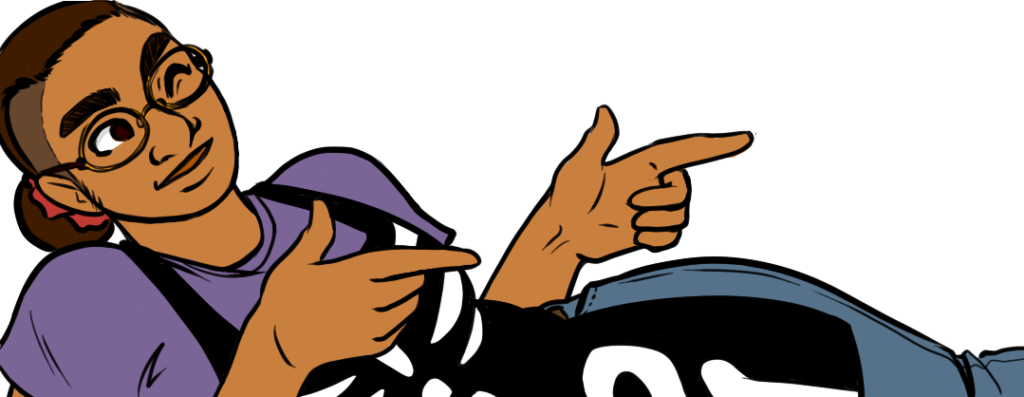
Since Brooms is a historical fiction graphic novel, I was wondering if there was any
research involved during your creative process? And if so, what kind?
J: Absolutely. I love doing research for stories, and I love history, so whenever I work on a project, especially a historical project, I try to do as much research as I can. Even though the characters and their lives are fictional, the setting (aside from all the magic) isn’t. We wanted to represent the kinds of people who really did exist in 1930s Mississippi, and we wanted to do so respectfully. A few examples on my side of things included looking into my own family’s history, but also doing research on the Mississippi Band of Choctaw which Luella, Mattie, and Emma are part of. Emma is deaf and uses sign language I referenced from Indian Sign Language by William Tomkins which is not entirely regionally accurate, but is period accurate. Loretta uses mobility aids from the time period after having a stroke at a young age, and the foods you see in various scenes are all things that would have been made by people in those places and times.
T: There was tons of research involved, which was great for someone who enjoys amassing folders and folders of reference. I dug through a lot of vintage photography from Mississippi in order to get a sense of the environment and clothing of the period.
Upon reading Brooms, readers discover that there seems to be a unique magic system that the main characters use, in particular referencing root magic. Would you mind going into some of the world-building behind that?
J: Because none of the girls have gone to an official magical academy, they’ve all
learned magic through familial knowledge or what they’ve shared with each other, and in the American South, particularly in Black communities, root magic is a very real cultural aspect of life. The magic Billie Mae and Loretta use and teach others is based loosely on the structure of real life root magic practices, which is often based in drawing energy from the earth and seeking guidance from ancestors.
How would you describe your writing process?
J: A little bit messy to be honest! I often think of a particular scene that just sticks in my mind and if I think it’s solid enough for a whole story, I begin to build around it bit by bit until everything starts to take shape. I often have several scribbled ideas on sticky notes all over the place before compiling them into a very rough outline. Then I rewrite it many, many times before showing it to anyone else.
Growing up, were there any stories in which you felt touched by/ or reflected in? Are
there any like that now?
J: One of my favorite books growing up was Her Stories by Virginia Hamilton, which
is a collection of oral stories, myths, and fairytales collected from Black folks in the American South. As a kid it was one of the few times I saw people who looked like me in fairytales and folk tales. Now that I’m older, I know there were other books but they were just harder to find. I think things have definitely improved as more queer and BIPOC stories are being published, which has been a joy to see, and I hope that trajectory continues.
T: As a kid, I read and re-read His Dark Materials by Philip Pullman, and watched Studio Ghibli films whenever I could. Princess Mononke in particular always resonated with me, as well as Kiki’s Delivery Service. I never felt reflected by these stories, but they touched me very deeply. Now, I immediately think of Aidan Thomas’ Cemetery Boys. It was the first time I ever encountered a character that looked like me, and felt like me.
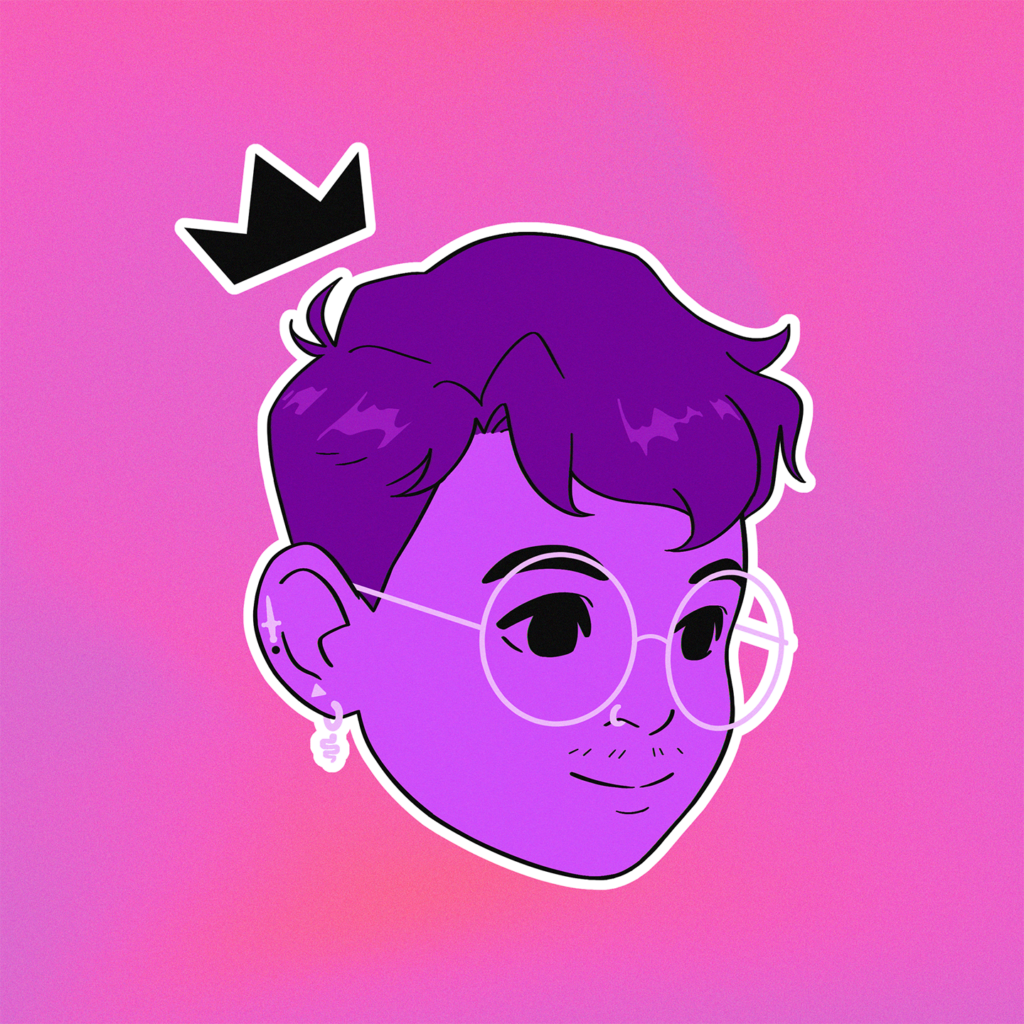
As creatives, who or what would you say are some of your greatest creative influences
and/or sources of inspiration in general?
J: This one is always tough because I feel like I draw from so many influences from
books I read to artists I follow, but I can say that one of my earliest influences in writing was
Patricia C. Wrede’s Enchanted Forest Chronicles series, which made me rethink the role or classic fantasy tropes and how they’re used in stories. I was also obsessed with InuYasha as a teen so that probably had a lingering effect.
T: Mike Mignola is a huge one for me, as well as Ray Bradbury, Fiona Staples and Rosemary Valero O’Connell. Their works always remind me why I love (and need) to create stories. Music is also really important to my process. I listen to a lot of Wolf Alice, serpentwithfeet and Nation of Language and they never fail to inspire me.
What are some of your favorite elements of writing/illustrating? What do you consider
some of the most frustrating and/or challenging?
J: For me, the best parts of writing are the initial rush where everything is new and
exciting, and then the point where it’s all a completed written mess and I get to go in and edit it into something polished. It’s just so satisfying. The parts I enjoy the least are when everything is half done and I have to slog through writing the less exciting scenes, or when I’m stuck and can’t seem to get the words to work the way I want them to. Usually that’s when I need to step away for a bit and take a long walk so I can come back with fresh eyes.
T: I really enjoy designing characters, and when I get to the inking stage for interior pages. I’ve always loved inking, and inking pages in particular is very satisfying. On the flipside, creative stamina is inevitably a huge challenge. I think this struggle is something a lot of graphic novelists can relate to. It’s a very troublesome mental block to experience, especially when you’re working on a project that requires years of commitment.
Many creators would say one of the most challenging parts of writing a book is finishing
one. What strategies would you say helped you accomplish this?
J: It’s true, the bulk of working on a book is sitting down and powering through the
tedious bits. My motivation (aside from deadlines and never wanting to burden my collaborators by delaying their work) is honestly using the parts of a story that I’m looking forward to writing as a reward for getting through the boring parts. Another factor is balancing the work that needs to be done while also giving yourself space to recharge the creative battery and step away. Work should never take over every aspect of your life. Take breaks, stretch, move around, drink more water, and get your sleep. You’ll come back to your work more energized for it.
T: Communication is really important, in my opinion. Talking with your team, asking for help…I can’t stress enough how vital that was to helping make BROOMS a reality.
Aside from your work, what are some things you would want others to know about you?
J: I’m not very exciting outside of work, but I do love food and the process of how it’s made. I am a big supporter of agriculture workers and sustainable farming practices, particularly in the spice trade. If you ever need to know a good vanilla vendor, I’ve got you.
T: My spouse and I bought combat-grade French lightsabers and I’m learning how to spin with it. We’re planning on performing a choreographed battle sequence instead of a first dance at our wedding reception, and it’s been a blast to learn. If you’re curious, check out Michelle C. Smith’s spinning videos.
What’s a question you haven’t been asked yet but that you wish you were asked (as well
as the answer to that question)?
J: I always secretly hope people will ask for hot chocolate recommendations, and I
have several! These are all companies with fairly traded, sustainably grown cocoa, and are
owned by BIPOC: Cultura Chocolate’s Mexican Drinking Chocolate, Villa Real’s Vanilla Hot
Chocolate tablets, CRU Chocolate’s amazing flavor selection of drinking chocolates, and
Lucocoa’s Orange holiday hot cocoa mix.
T: I love rocks, gems, crystals…and I want any excuse to talk about them! It would be fun to be asked what my favorite is. (The answer is obsidian. Mirrors of polished obsidian called tezcatl were used by Aztec shamans as a way to view the spirit world).
What advice might you have to give for other aspiring writers?
J: My advice to aspiring writers is to write what you love, don’t try to jump onto trends for a quicker foot in the door, though it can be very tempting. Writing is a slow process and we only ever see the “sudden” successes from the outside. Take your time, put in the effort to get from start to finish, and write the stories you want to tell. And lastly, be open to feedback (from editorial pros, not internet randos who just want to be mean) because they’re there to help the story be the best it can be, it’s not a personal attack, so don’t be too precious with your first few drafts.
Are there any other projects you are working on and at liberty to speak about?
J: I’ve got a couple secret projects, but I also have a few new pitches I’m excited for. An enemies-to-lovers romcom about two former rival crime bosses, a non-romantic comedy about two ace teens fake dating, and an alternate history western.
T: I have some cool projects in the works, but nothing I can talk about just yet. Though hopefully I’ll be able to share some news soon!
Finally, what LGBTQ+ books/authors (comics included) would you recommend to the
readers of Geeks OUT?
J: I have SO MANY, so I’ll narrow it down to just a few. Shelley Parker-Chan’s She Who Became The Sun, Olivia Stephens’ Artie and the Wolf Moon, Kat Leyh’s Snapdragon, Mike Brooks’ The Black Coast, and Sacha Lamb’s When The Angels Left The Old Country.
T: This isn’t comprehensive, but off the top of my head I would recommend Cemetery Boys by Aidan Thomas, Nimona by N.D. Stevenson and Let Me Out by Emmett Nahil and George Williams.

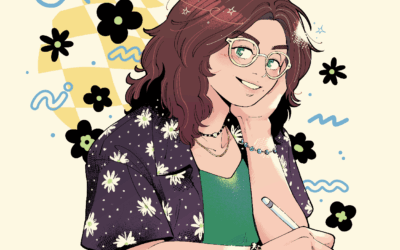
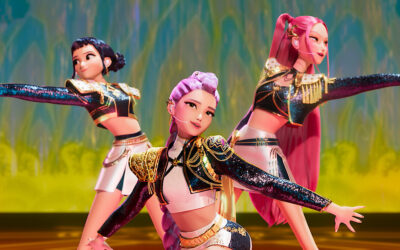

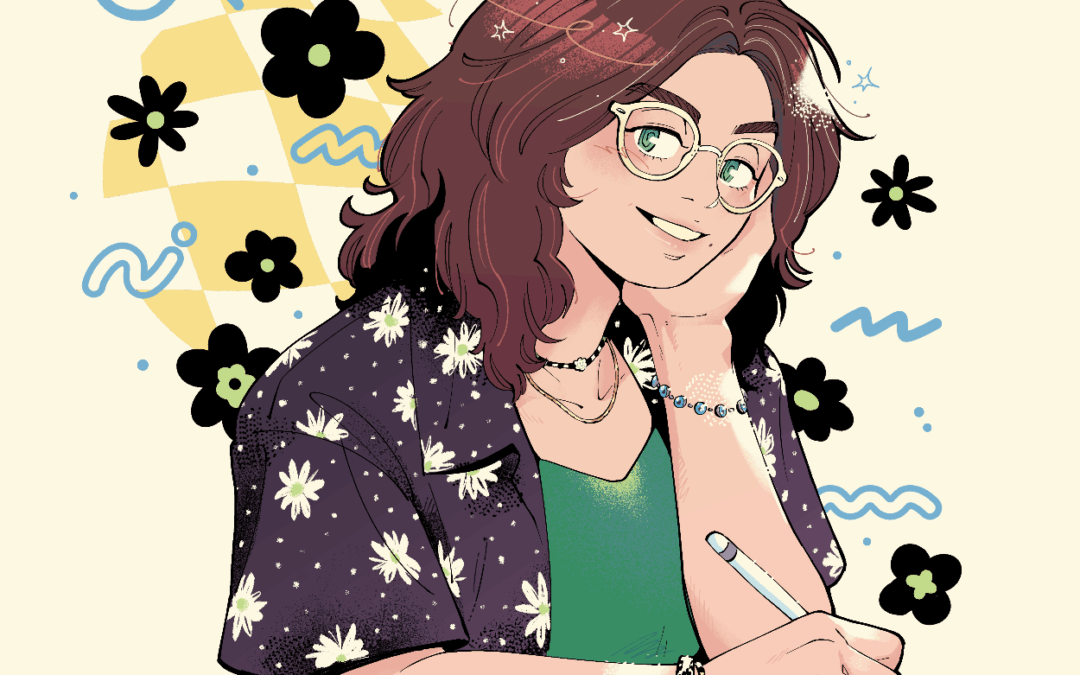
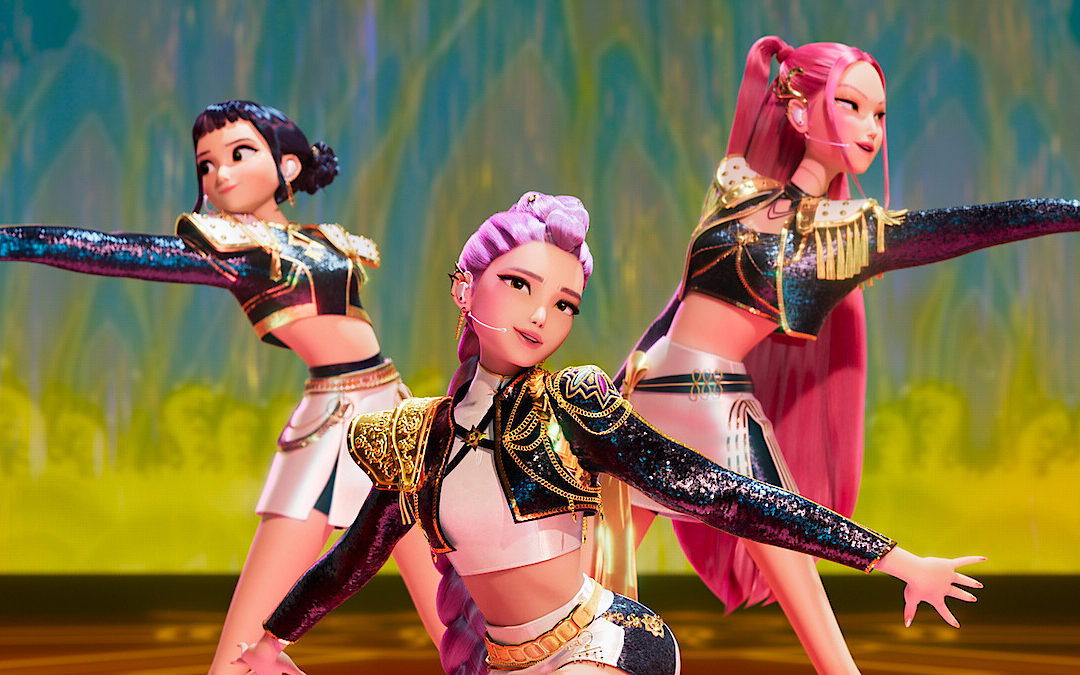

0 Comments